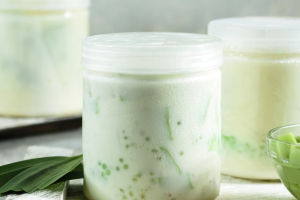Latte Coffee Overview
Latte coffee is a very popular drink in modern coffee culture.
Originating in Italy, it is known for its mild flavor and rich milk aroma.
The name "Latte" comes from the Italian word for "milk."
This article will explore the history, preparation process, variations, and global significance of latte coffee.
History
Although the history of latte coffee is relatively short, its origins are deeply rooted in Italian coffee culture. In the 1960s and 1970s, Italian coffee culture began to spread to the United States.
Italians traditionally enjoyed mixing espresso with milk, a drink known in Italy as "Caffè Latte." In the U.S., the name was simplified to "Latte," becoming a common option on modern coffee shop menus.
Preparation Process
The preparation of a latte is relatively simple, but each step significantly impacts the final flavor. The basic process includes the following steps:
1. Preparing Espresso: Espresso is the core of a latte. To make espresso, hot water is forced through finely ground coffee under high pressure. Each shot of espresso is typically 30 ml, with a strong coffee flavor and rich aroma.
2. Steaming Milk: Another key component of a latte is milk. During preparation, milk needs to be heated to about 65°C using a steam wand and frothed to create a rich foam. Steaming not only raises the milk's temperature but also makes its texture creamy and smooth.
3. Mixing and Pouring: Pour the prepared espresso into a cup, then gently pour the steamed milk over it. For a perfect foam layer, the foam should be even and smooth. During mixing, you can adjust the ratio of milk to espresso according to personal taste, typically around 1:3 (espresso to milk).
Variations
With the globalization of coffee culture, many interesting variations of the latte have emerged. Here are some common ones:
1. Vanilla Latte: Adding vanilla syrup to a latte imparts a subtle sweet aroma. This variation retains the richness of the coffee while adding an extra layer of flavor.
2. Caramel Latte: Adding caramel syrup or caramel sauce to a latte adds a sweet caramel flavor. Caramel lattes often have caramel bits sprinkled on top, enhancing the texture and flavor.
3. Matcha Latte: Replacing espresso with matcha powder, a matcha latte is made by mixing matcha powder with hot milk. This variation is ideal for those who enjoy tea flavors and want to try a different coffee experience.
4. Pumpkin Spice Latte: Often available in the fall, pumpkin spice lattes include pumpkin puree and specific spices (such as cinnamon, cloves, and ginger), offering a rich autumnal flavor.
5. Almond Latte: Using almond milk instead of regular milk, this variation is suitable for those who are lactose intolerant or enjoy the flavor of almonds. Almond milk's nutty aroma and taste add a unique flavor to the latte.
Global Impact
The popularity of latte coffee is not only reflected in its variations and flavors but also its significant place in global coffee culture.
As a quintessential Italian coffee, the latte enjoys widespread acceptance in coffee shops around the world. In particular, in the United States, the latte has become a staple daily drink for many coffee enthusiasts.
Additionally, the techniques and innovations related to latte preparation have profoundly influenced coffee culture. Many coffee shops and baristas continually experiment and refine their methods, leading to diverse developments in latte flavor, appearance, and creativity. Latte art is one such innovation, where milk foam is poured into espresso to create beautiful patterns, enhancing the visual and sensory enjoyment of the coffee.
Conclusion
Latte coffee, with its unique preparation methods, rich variations, and significant role in global coffee culture, has become an important symbol of modern coffee culture.
Understanding the history, preparation process, and variations of the latte not only allows us to better appreciate this drink but also helps us gain more enjoyment and satisfaction in our coffee experience.


